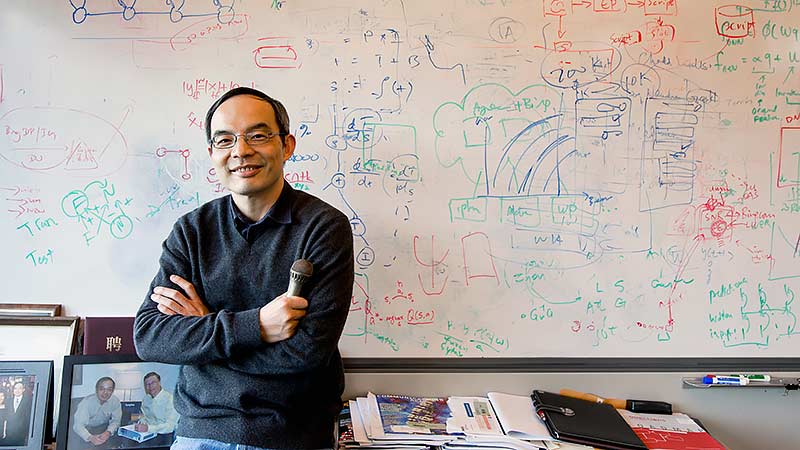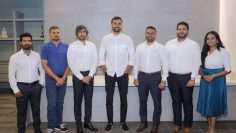
Asia is the next frontier for AI development
Ralph Haupter, President, Microsoft Asia and Corporate Vice President, Microsoft Corp
In a few short years, Artificial Intelligence (AI) has been thrust into the limelight – elevating itself from a far-fetched, science-fiction topic to one that is currently dominating my conversations with customers, partners and industry leaders across Asia.
The journey to where we are today with AI is a long one – almost seven decades in the making. However, in the last few years, the convergence of big data, ubiquitous and powerful cloud computing, along with breakthroughs in software algorithms and machine learning have made exciting new scenarios in AI deployment a possibility.
AI today is at the center of the digital transformation of organizations and even nations. By 2019, IDC predicts that 40% of digital transformation initiatives will be supported by AI and cognitive capabilities that provide timely, critical insights for new operating and monetization models in this region.
With imagination and plenty of data, AI can create vast benefits at scale. For example, let me share with you how Microsoft and our partners are helping tourists in Japan navigate its streets with improved ease. It is estimated that there are more than 28 million visitors to Japan every year and, with the Tokyo Olympics just around the corner in 2020, that number is set to increase. As many can attest, it can be quite daunting for tourists to navigate around Japan – which is where AI can help.
Miko is an AI-power chatbot and the star of new mobile travel app Japan Trip Navigator. Created by Microsoft in partnership with travel agency JTB Corp and navigation firm NAVITIME Co, Miko provides travelers in Japan with real-time information from official sources as well as insights from other users of the apps. Miko can also help with hotel and other bookings on the app.
What’s more, one of the more advanced and interesting capabilities of Miko is that it is imbued with image recognition functions using Microsoft’s Cognitive Services AI platform, enabling her to provide information to users through the photos that they have taken.
Asia will be key to AI development globally
The Asia region is uniquely placed to play a leading role in the development of AI at scale. There are three reasons for this:
AI needs data: AI is dependent on data to perform; the more data that is fed into an AI system, the better it gets. Not only does Asia have the world’s largest population, it continues to be a region that is more digitally-connected than other parts of the globe and hence can provide the massive amounts of data that AI systems need to grow. At Microsoft, this is a particular strength – we’ve developed “graphs” of information from our work in Windows, Office, LinkedIn, Bing, Cortana and more, which have helped us develop AI tools that can better anticipate and respond to people’s needs. Naturally, the advent of AI itself raises some ethical considerations around, for example, appropriate access and use of data. At Microsoft, we have identified six ethical principles– fairness, reliability and safety, privacy and security, inclusivity, transparency, and accountability – to help guide the cross-disciplinary development and use of artificial intelligence.
AI needs talent: Whilst we anticipate the mass adoption of AI this year, there is still a long way to go for more powerful and sophisticated AI programs to be developed. To do that will require a large and strong pool of science, technology, engineering and mathematical (STEM) talents that technology companies and research bodies can tap into to advance AI capabilities. And this talent is increasingly likely to originate from Asia. For example, according to UBS, by 2025, the combined AI talent pool of China and India alone will exceed that of the US.
At Microsoft, we recognized the potential to access vital technical talent in Asia 20 years ago when we established Microsoft Research Asia in Beijing in 1998. This has grown to be our largest R&D facility outside of the US, with hundreds of researchers, developers and visiting scientists working together on long-term technological challenges. We have a similar laboratory – Microsoft Research India – based in Bangalore and these two world-class facilities regularly achieve industry-leading advances in the world of AI. For example, Microsoft Research Asia were recently part of our global team that developed the first machine translation system that can translate news articles in Chinese to English with the same quality and accuracy as a human.
AI needs adoption: As stated, the more data that is fed into an AI system, the better it gets. One of the unique aspects of Asia is its large youth population, that have been born into a digital world. The UN has estimated that 60% of the world’s youth population is in Asia Pacific. These “digital natives” are more receptive to digital technologies enhancing their lives. Not only that, but many Asian countries are, historically, late adopters of legacy technology, enabling them to leapfrog other nations dependent on old infrastructure and embrace new ways of living and working.
Microsoft’s AI investment in Asia
We are excited about the future of AI in this region and my team and I have prioritized four key building blocks to ensure we are able to harness AI optimally with our customers and partners today and in the long run.
- Developing AI capabilities: AI revolution will not happen without world-class STEM talents driving R&D, and creation of programs and applications. We will continue to create partnerships with governments, industry bodies and organizations to develop AI capabilities in this region. A good example of this is our recent investment of US$33 million in partnership with the Taiwanese Government to create a AI R&D Hub in Taiwan to help transform the island’s technology and industrial sector.
- Developing partner ecosystem: We are focused on transforming our IT partner ecosystem across Asia to enable them to bring AI capabilities to the markets, with greater focus on government, education, healthcare, manufacturing, financial services and retail sectors. To enable this, we recently announced that we are committing $500m over the next two years to offer joint sales engagements with startups, along with access to our technology, and new community spaces that promote collaboration across local and global ecosystems
- Creating the AI platform: We will continue to strengthen our hyper-scale cloud platform – Microsoft Azure- and its ability to deliver powerful AI capabilities in a secure manner across the region. Today, Azure is available to customers in 140 countries worldwide via 50 Azure regions across the world, more than any other cloud provider, which includes 15 here in Asia, This offers our customers and partners the scale needed to deliver AI programs at scale securely across the world.
- Reskilling Asia’s workforce: We are committed to working with public and private organizations to help reskill existing workforce to thrive in a new AI-driven digital world. For example, we recently launched a National Skills Program in South Australia in partnership with the Department of State Development and the City of Salisbury to provide digital skills to automotive supply chain workers whose roles were displaced by the closure of the Holden manufacturing plant in Elizabeth in late 2017.
In closing, I truly believe this will be Asia’s century. And AI offers the region an unprecedented opportunity for growth, productivity and innovation as well as the potential to solve some of the region’s most important societal challenges.
It will certainly be an interesting ride; so strap in – the revolution is about to begin!





